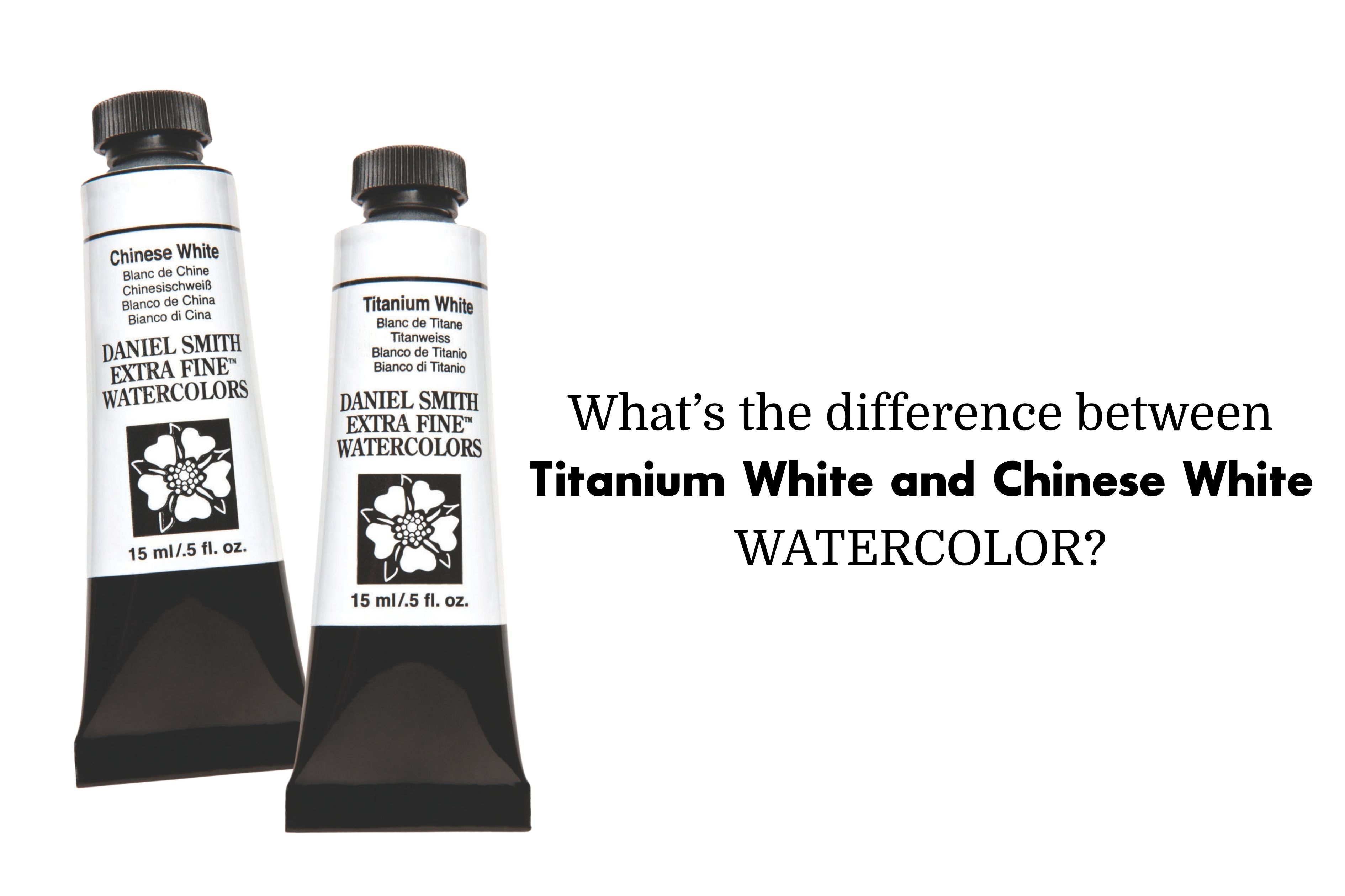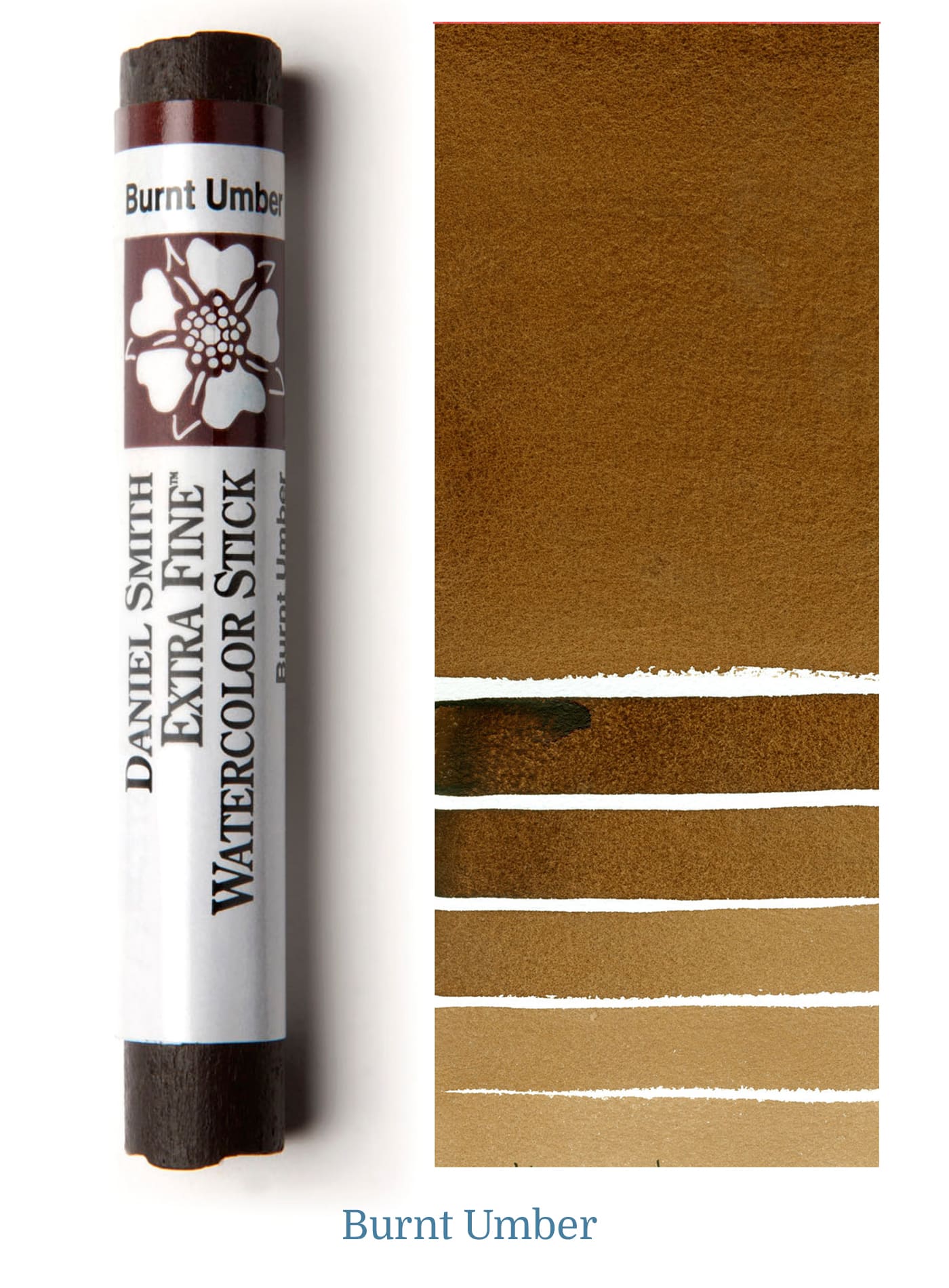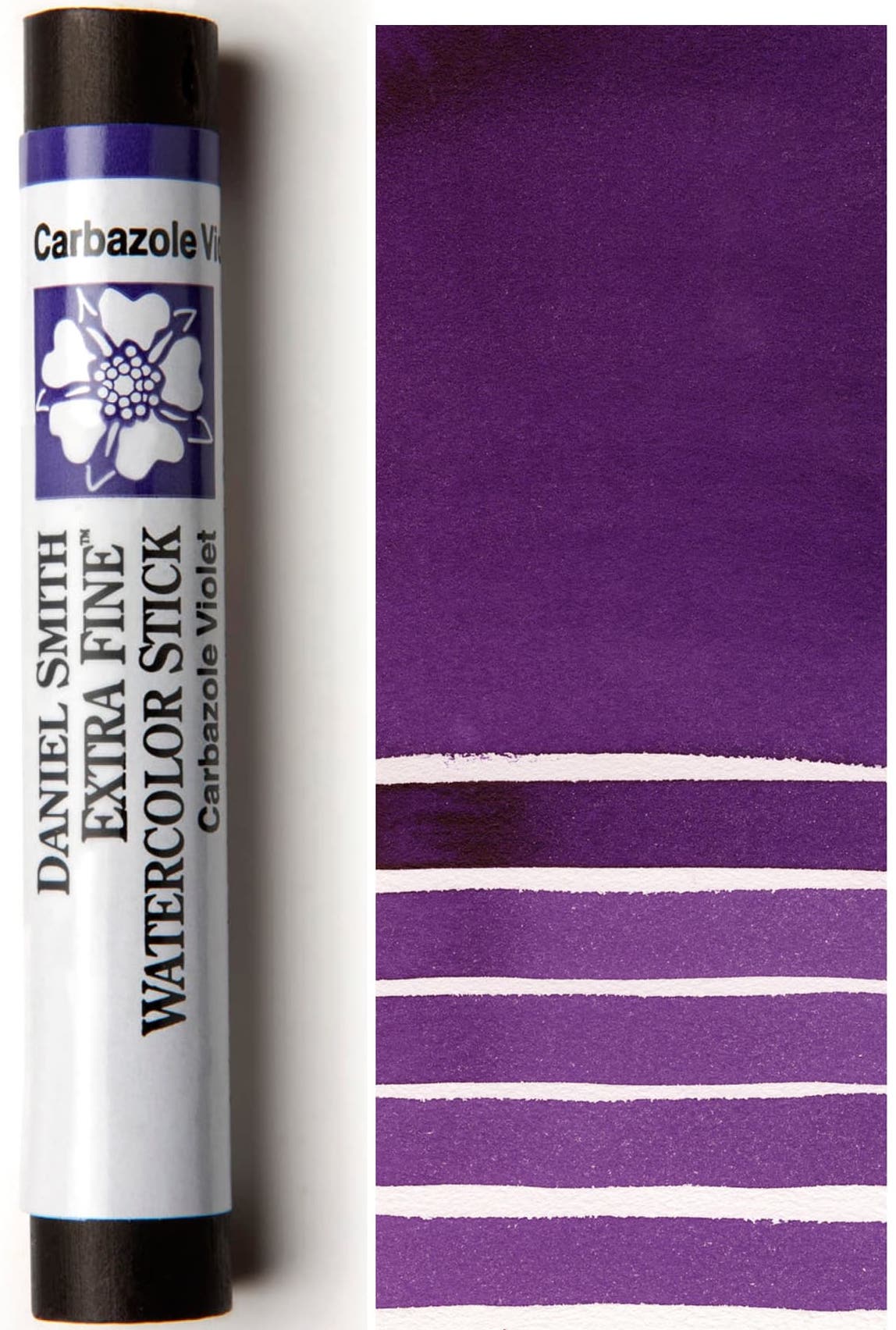Have you ever wondered what sets Blanco titanio apart from Blanco chino—and how each behaves in your watercolor paintings? Though both are classified as whites, their personalities and performance on paper couldn’t be more different. We asked some of our Brand Ambassadors to share how they use these two pigments and the unique roles they play in their creative process. They shared their thoughts and art process during our Jueves EN VIVO con John Cogley.
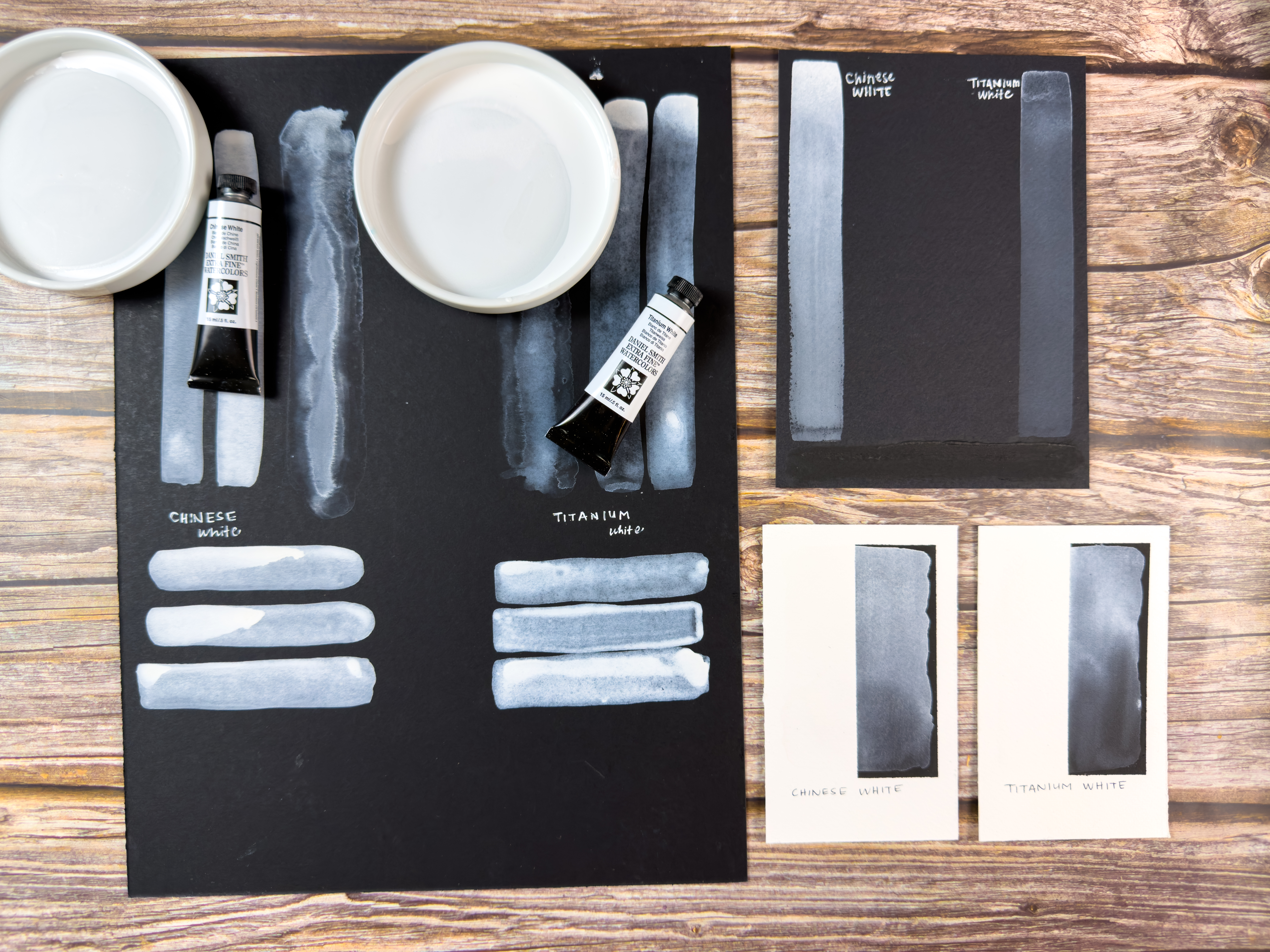
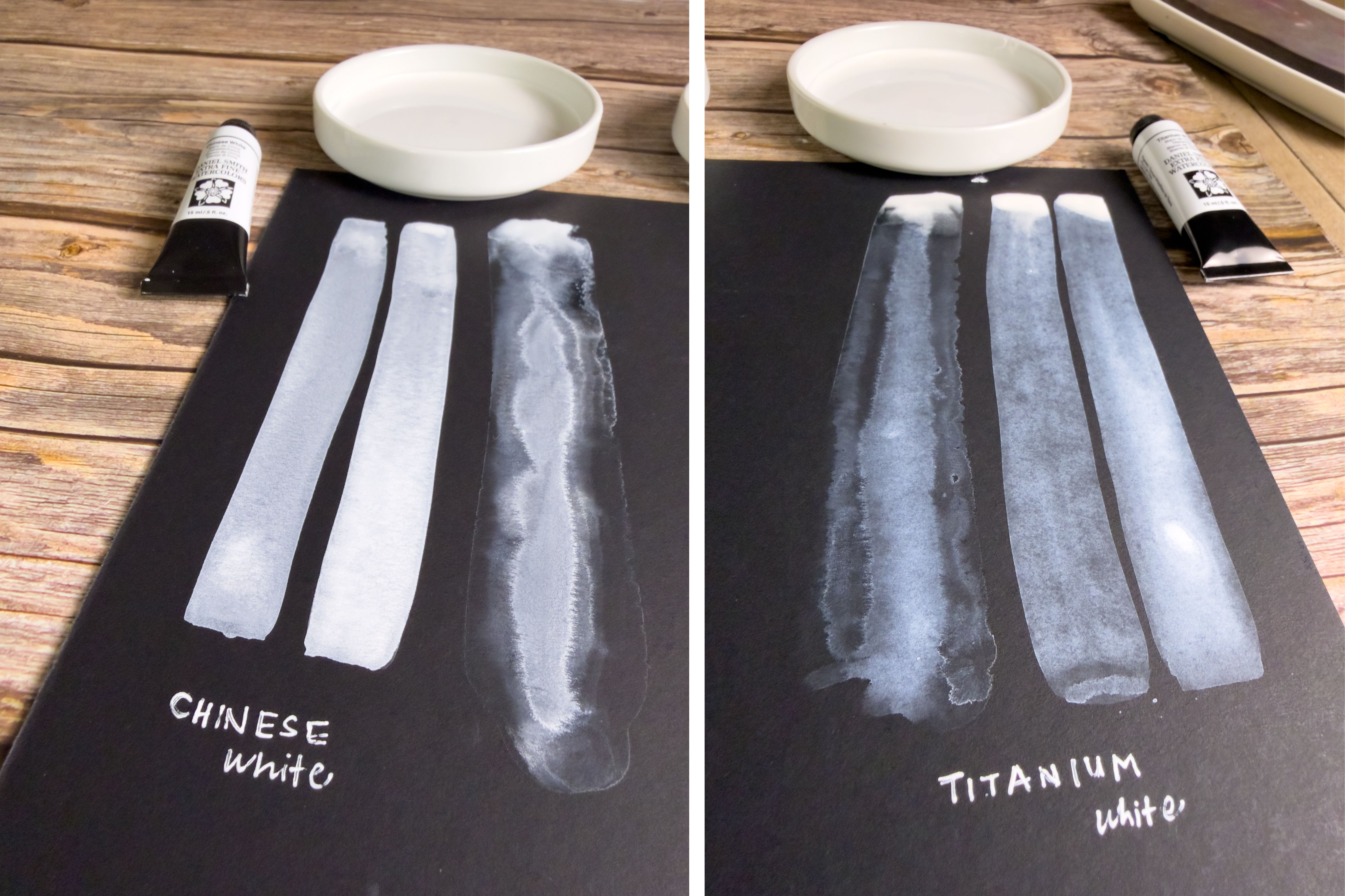
While both colors can be used straight from the tube or for mixing, their tinting strength and transparency define how they interact with other pigments.
| Property | Titanium White (PW6) | Chinese White (PW4) |
|---|---|---|
| Opacity | Feels more transparent; creates subtle, luminous tints | Feels more opaque; offers stronger covering power |
| Mixing Behavior | Produces soft, transparent, creamy pastels without overpowering | Can dominate mixtures, creating heavier, more opaque tints |
| Transparencia | Maintains watercolor’s luminosity—ideal for glazing | Reduces transparency; excellent for strong highlights |
| Tinting Strength | Gentle and controllable | Medium-high tinting power—a little goes a long way |
| Best Uses | Subtle highlights, pastel mixes, atmospheric veils | Bold highlights, snow, florals, and strong coverage |
Most watercolorists reach for Titanium White when they want softness and control, while Chinese White excels when maximum opacity and visual punch are needed.
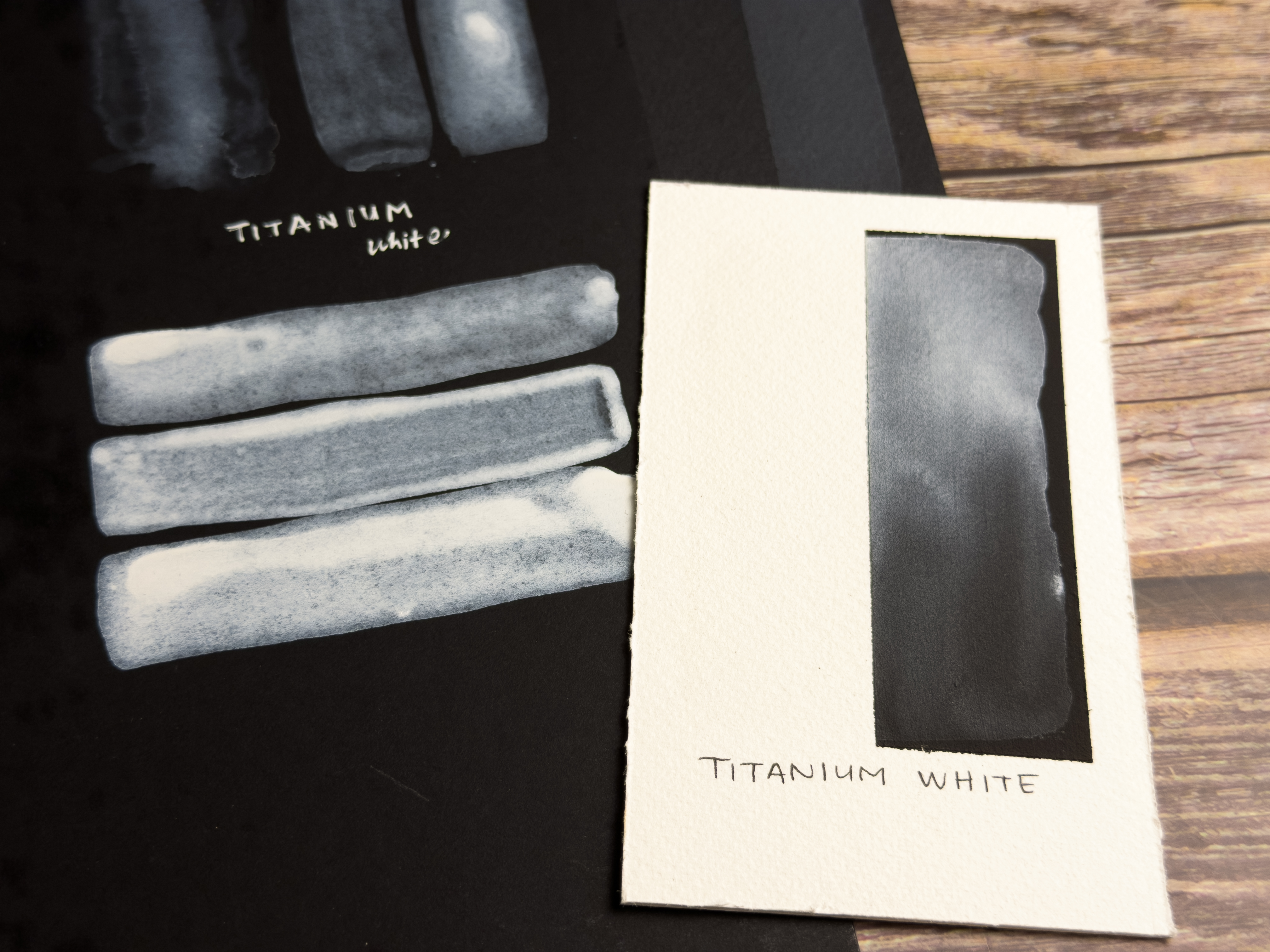
“Create pastel shades with a creamy, semi-transparent finish by mixing Titanium White with your favorite watercolor pigments. Although not opaque enough for full coverage, this watercolor can be used straight from the tube to add highlights or as a light wash over other colors for a soft veil of light tone. Excellent lightfastness and a smooth finish are hallmarks of this useful pigment.”
— DANIEL SMITH Color Stories
Disponible en: 5ml tubes, 15ml tubes, and Watercolor Sticks
Serie: 1
Resistencia a la luz: Yo - excelente
Transparencia: Semitransparente
Tinción: 1 – Non-Staining
Granulación: No granulante
Titanium White’s semi-transparent quality makes it ideal for creating soft tints and maintaining luminosity. Artists use it to mix gentle pastel hues, apply thin veils of mist or fog, and subtly adjust tonal transitions without losing the underlying color vibrancy.
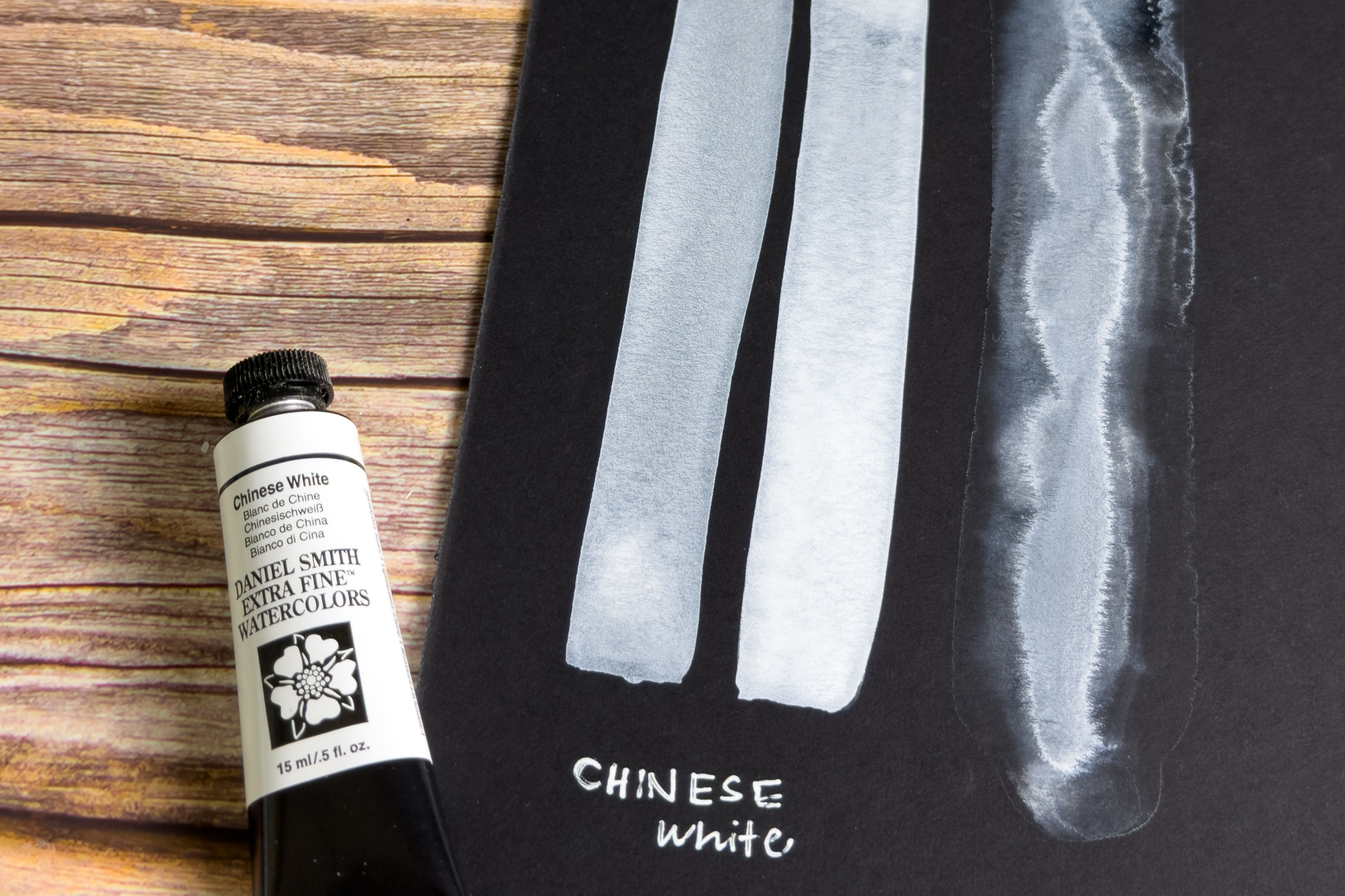
“Forbidden by purists, Chinese White is much more than a repair patch. This semi-transparent, pure white offers excellent permanency and a medium-high tinting strength. It’s great for lightening other colors… and, of course, you can always use it to paint details and highlights! If the paint works, use it.”
— DANIEL SMITH Color Stories
Disponible en: 5ml tubes and 15ml tubes
Serie: 1
Resistencia a la luz: Yo - excelente
Transparencia: Semitransparente
Tinción: 1 – Non-Staining
Granulación: No granulante
Chinese White offers a denser, more milky white that sits visibly on the surface. It’s the go-to choice for crisp highlights, small corrections, and painting luminous whites such as snow, florals, and reflections.
Letizia Monacelli – Pastel Palette Perfection

Letizia used both whites to create custom pastel mixes in half pans, selecting single-pigment colors with excellent lightfastness. Her palette included Azo Yellow, Permanent Orange, Perylene Red, Carbazole Violet, Phthalo Blue Turquoise, Phthalo Green (Yellow Shade), y Permanent Brown.
By blending each color with varying amounts of Titanium and Chinese White, she created a range of pastel tones that maintain pigment strength yet remain soft and harmonious.
Sabine Dreher – Controlling Atmosphere and Light
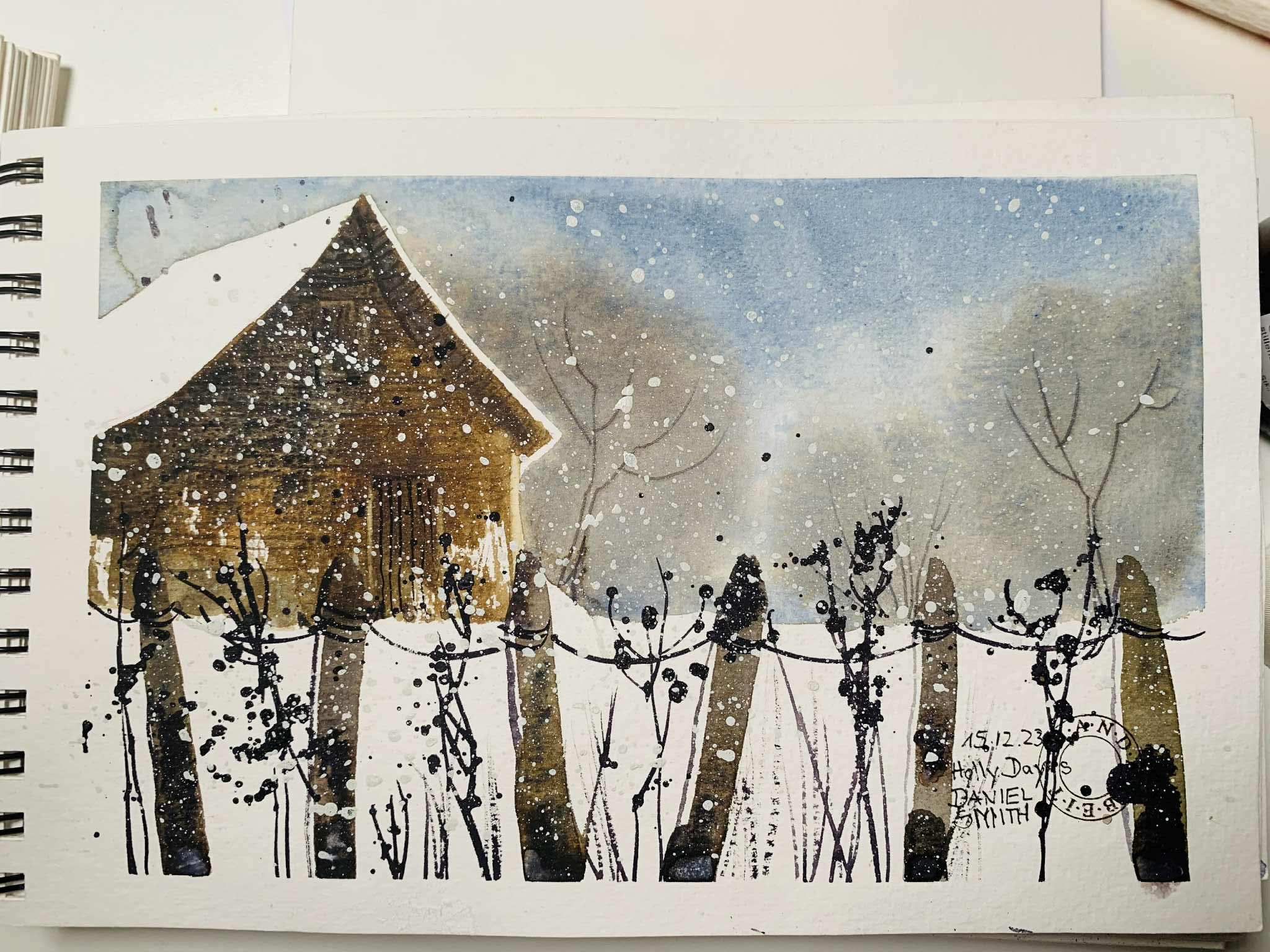
Sabine differentiates her whites by purpose:
- Chinese White for coverage: Highlights, snow effects, and crystal details where strong white presence is needed.
- Titanium White for atmosphere: Fog, light haze, and subtle gray effects on trees or mountains.
She also demonstrated how Chinese White maintains opacity even when diluted, while Titanium White dries more transparently, ideal for gentle layering.
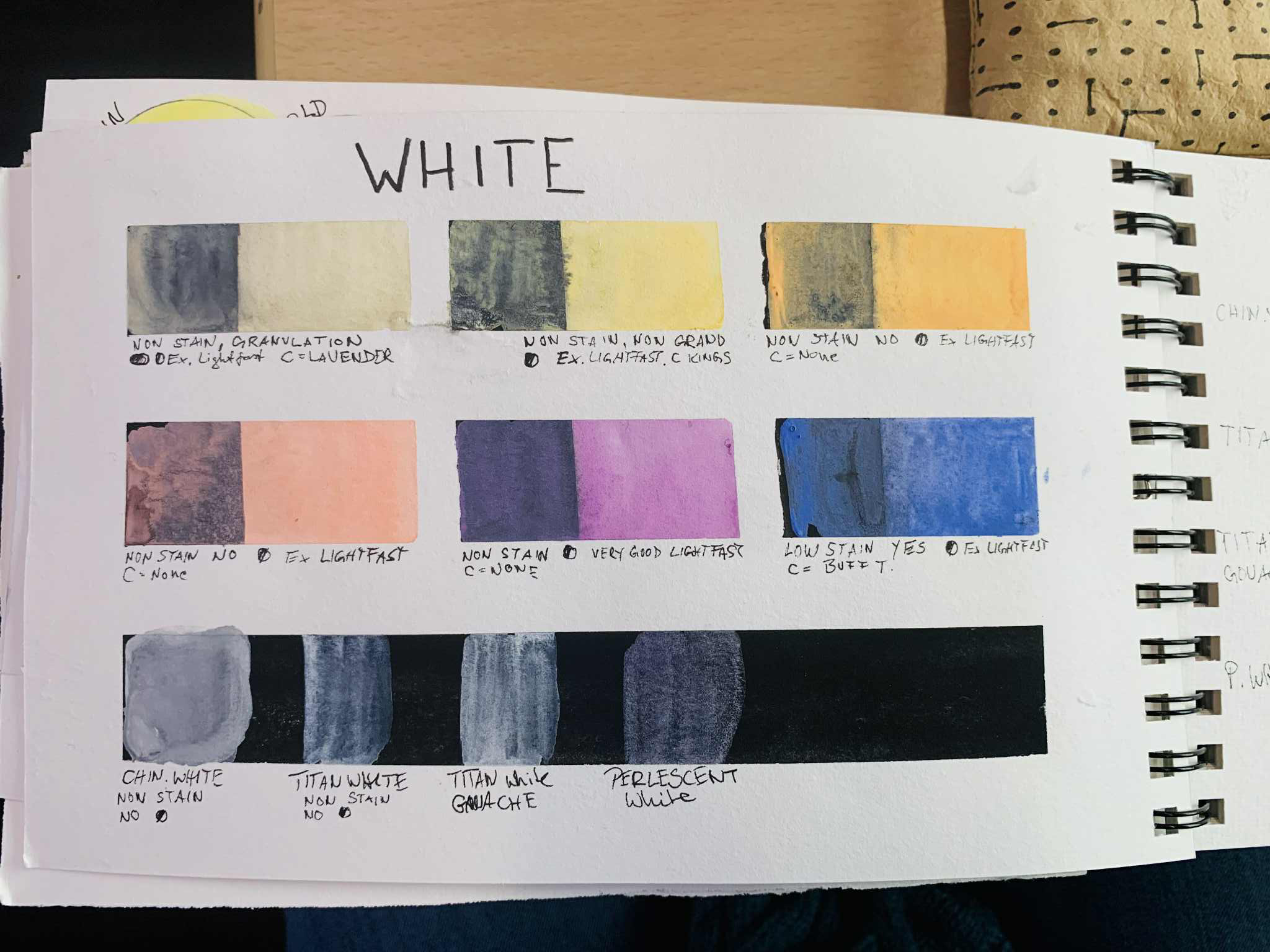
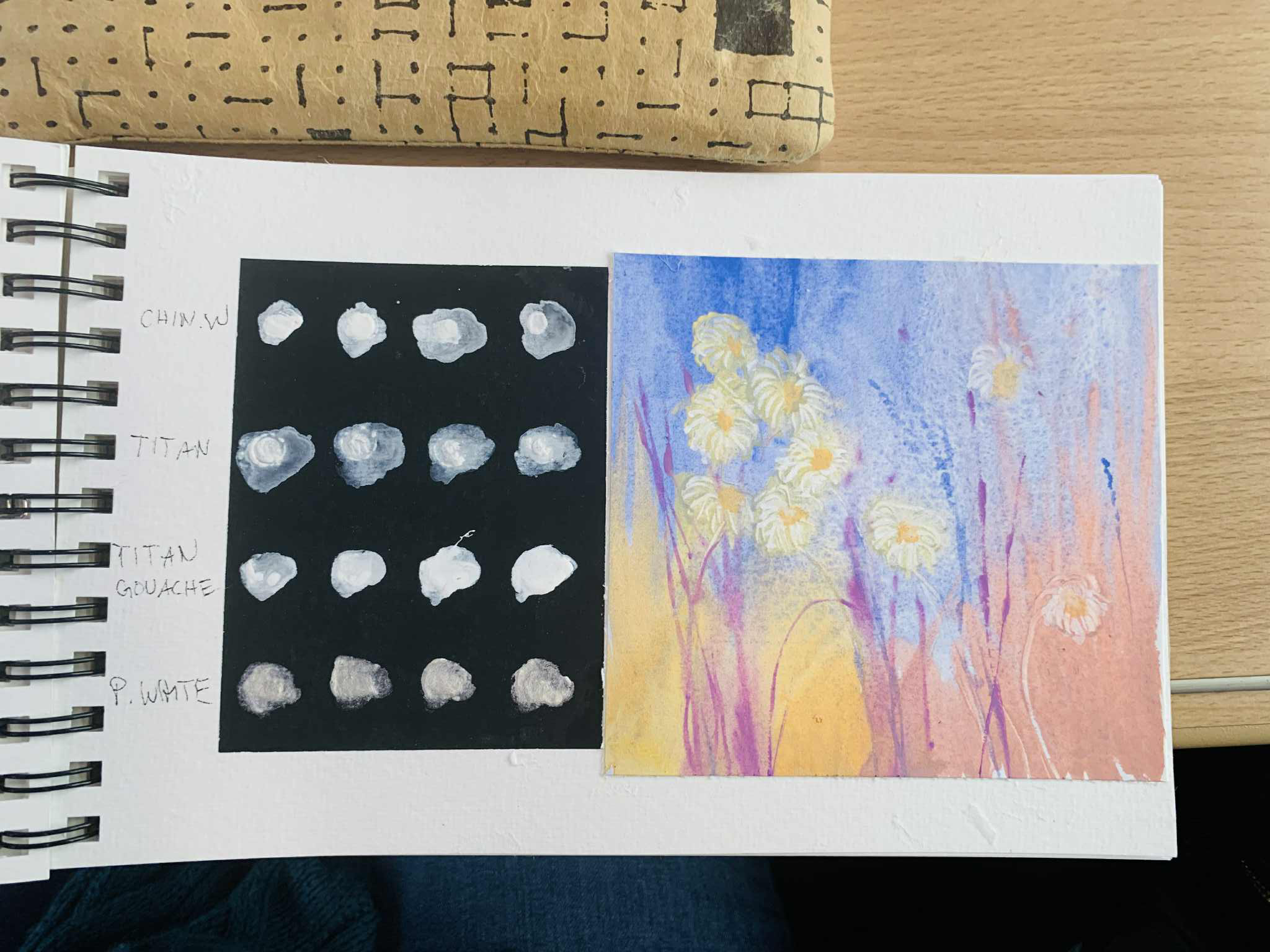
Silvia Trad – White for Realism
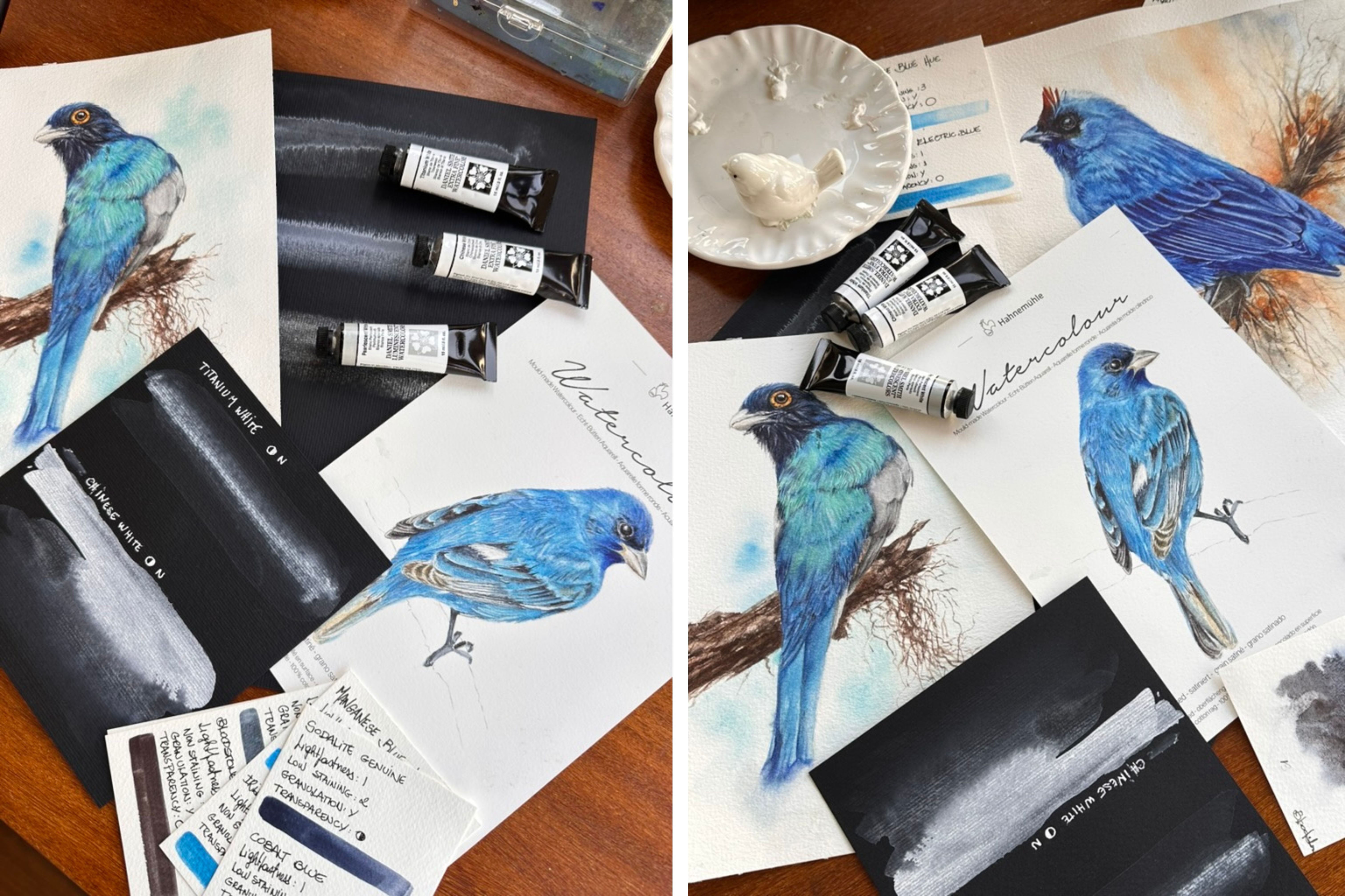
In bird paintings, Sylvia finds both whites indispensable:
- Titanium White: For soft feather highlights, layering, and defining details while letting the underlying hues show through.
- Chinese White: For stronger, opaque feather details and textural accents.
She often builds up one to three layers for desired intensity and prefers white watercolor over masking fluid for its natural blending with other pigments.
buffy kaufman – Experimental Pouring and Texture
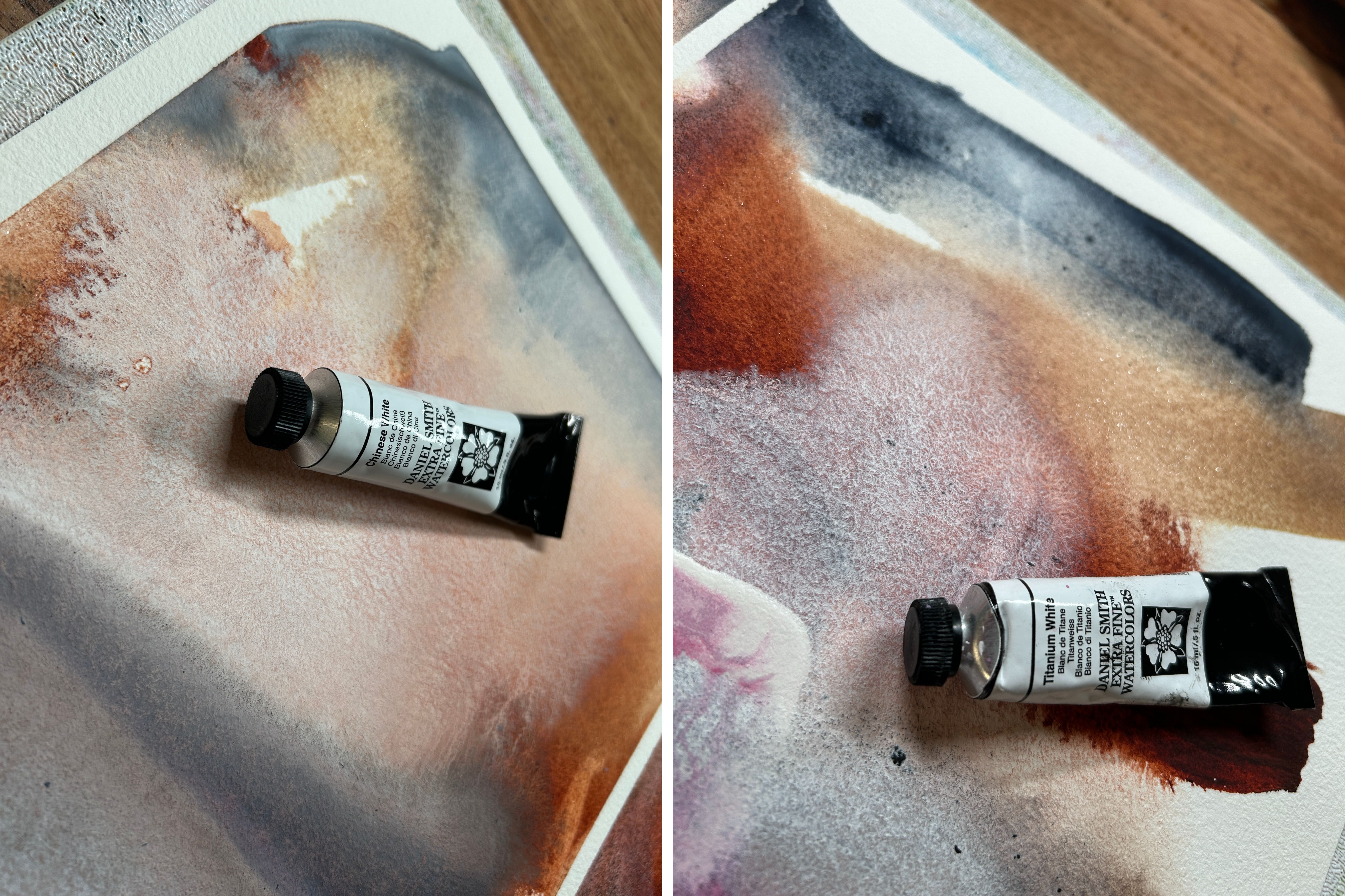
Buffy explored how whites behave in pours and glazes:
- Background Bloom Effects: Dropping Chinese White into wet washes for dreamy, blooming textures.

- Glazing with Titanium White: To soften muddy areas without covering them completely.
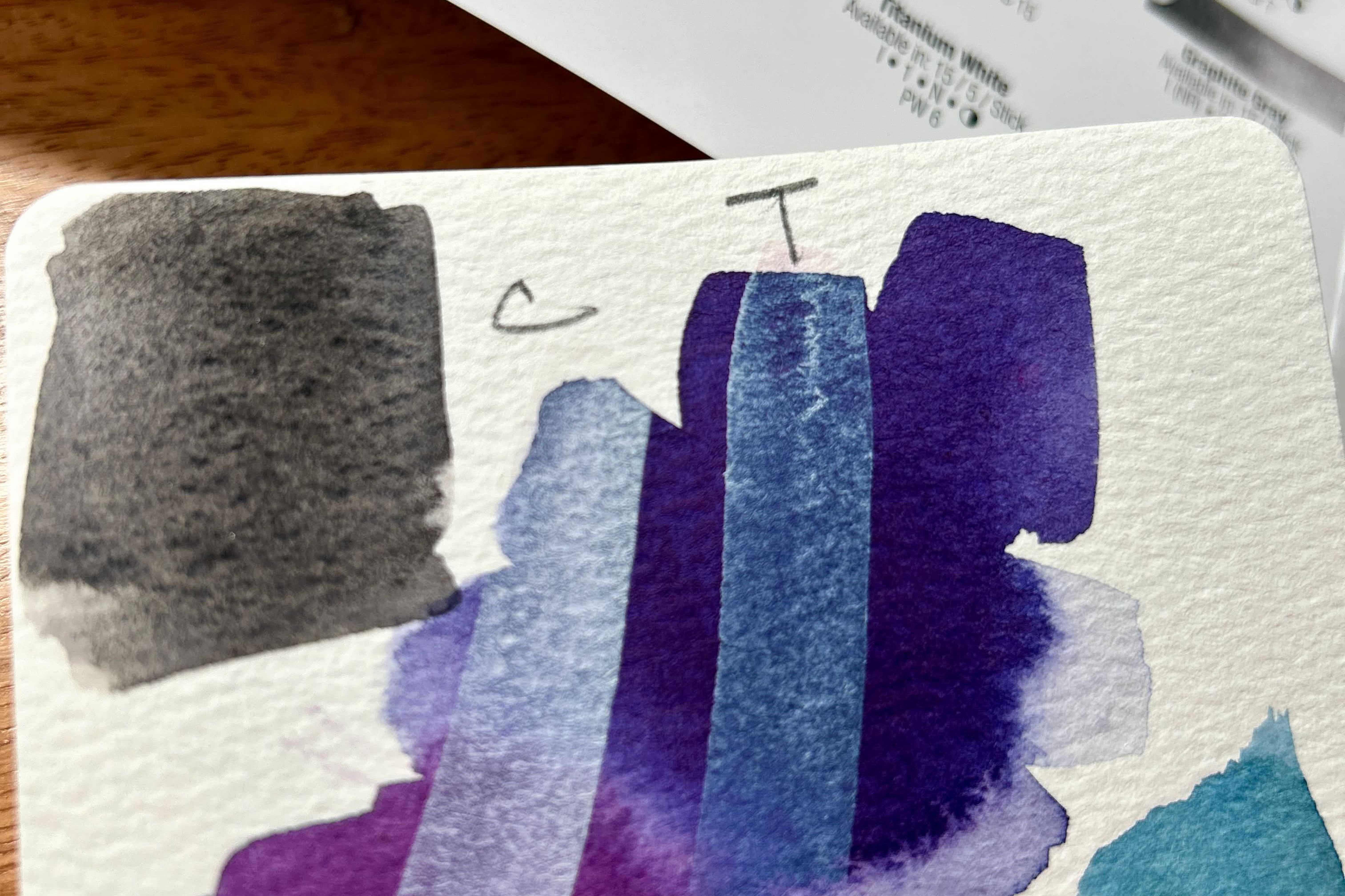
- Side-by-Side Pouring: Her comparison showed Chinese White merging into colors for misty, even effects, while Titanium White altered surrounding hues, creating foggy veils and pastel shifts. She describes them as “beautifully interactive, each with its own distinct charm."

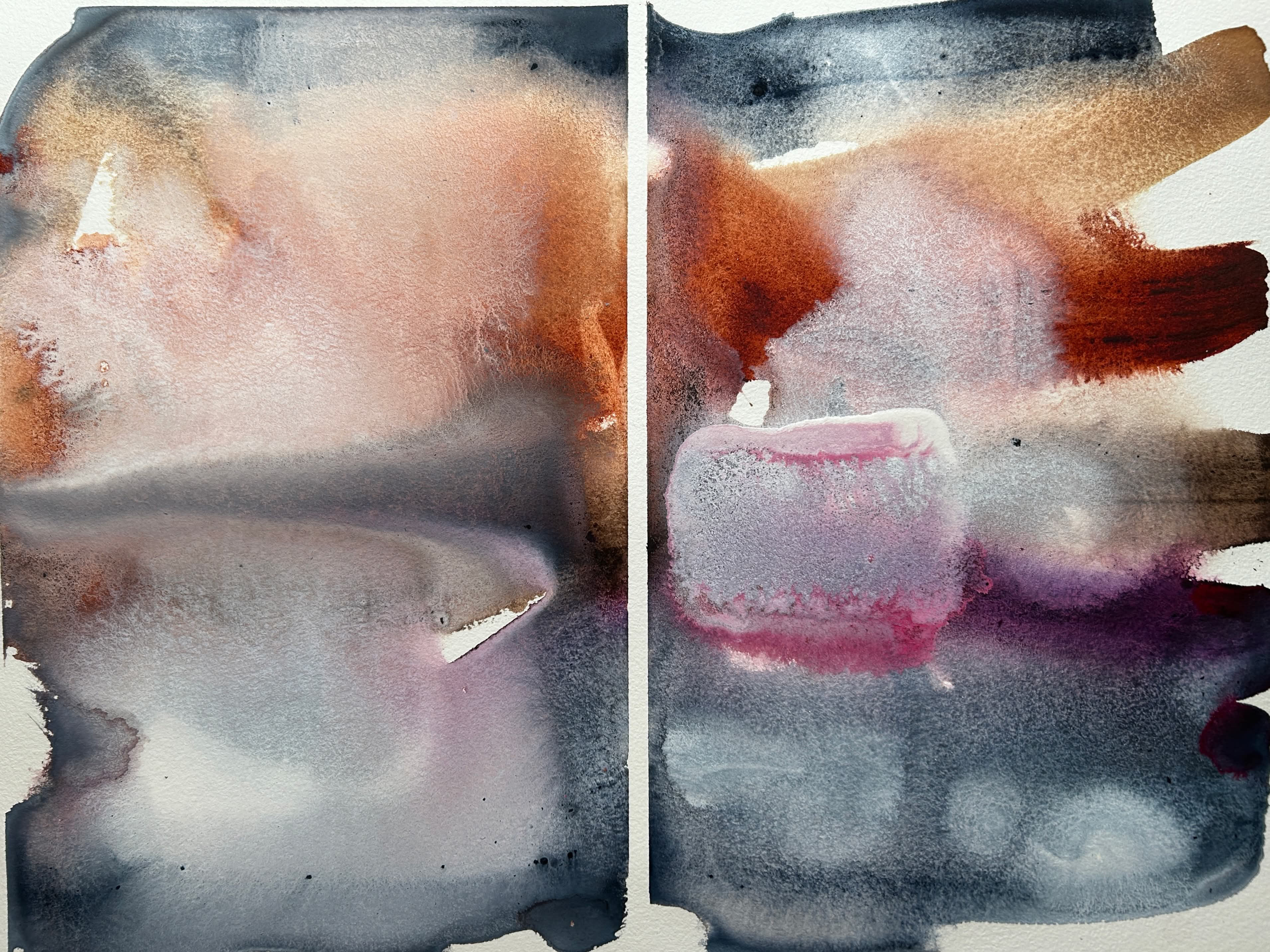
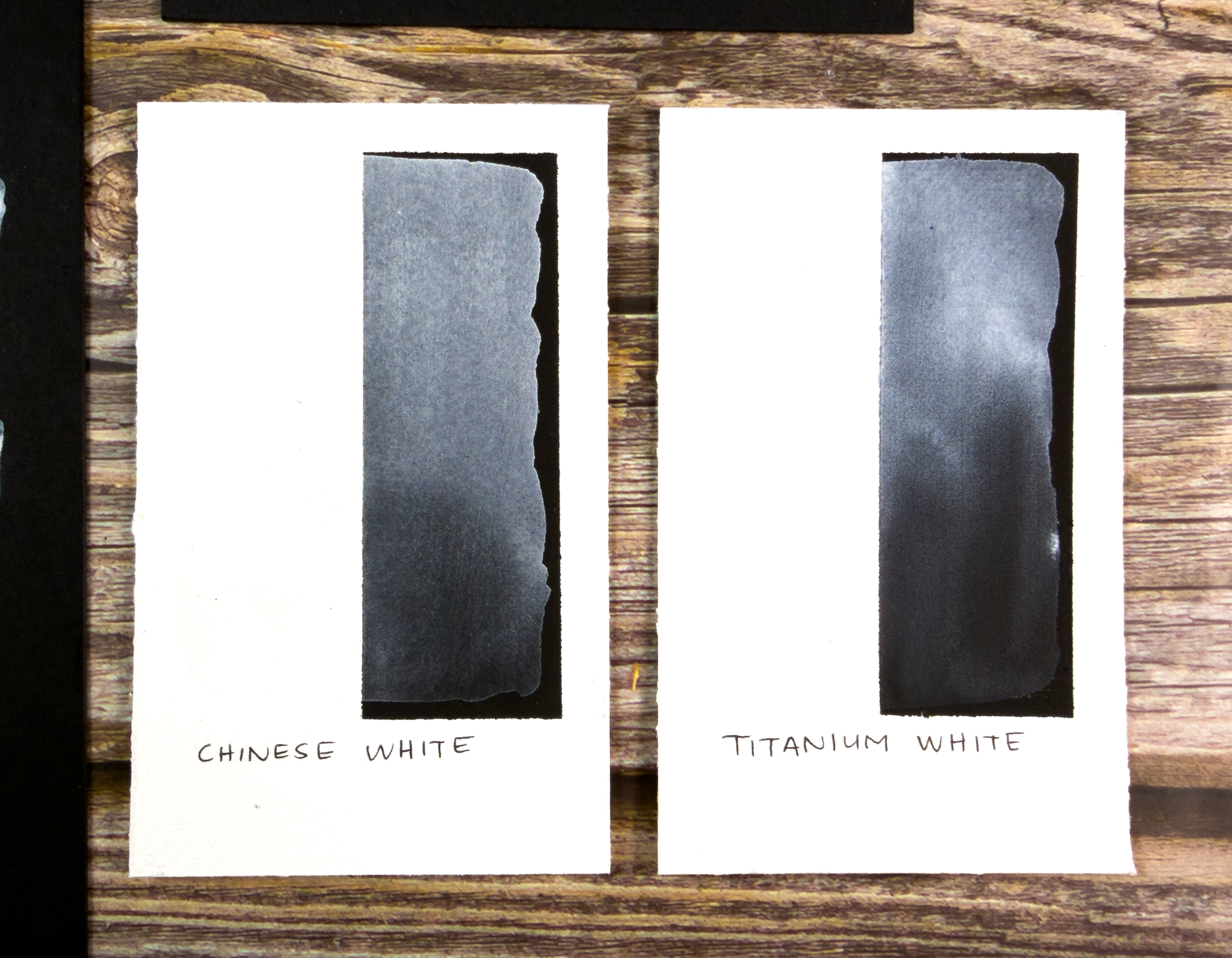
- Choose Titanium White when you want to preserve transparency, soften colors, or glaze without losing luminosity.
- Choose Chinese White when you need visible coverage, crisp highlights, or bold white effects that stay opaque after drying.
Both pigments are lightfast, smooth, and versatile—offering endless creative possibilities when added thoughtfully to your watercolor palette.
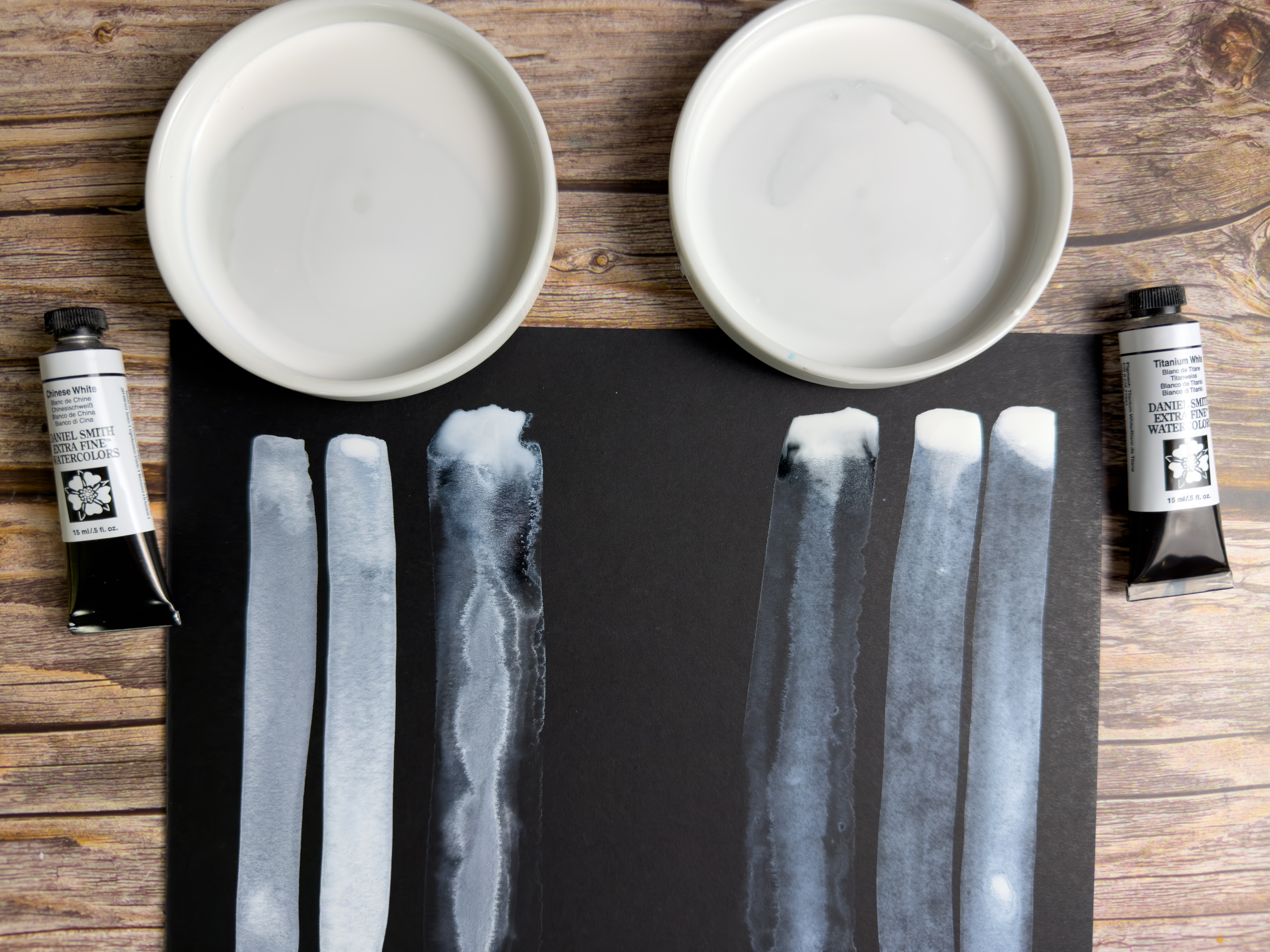
Experiment side-by-side by adding a touch of each white to your favorite DANIEL SMITH colors. Whether you’re lightening mixtures, softening transitions, or creating atmospheric effects, you’ll quickly discover that Titanium White and Chinese White each bring their own unique beauty to the watercolor experience.

